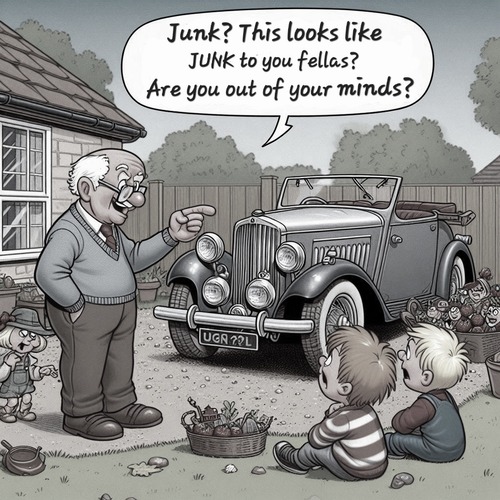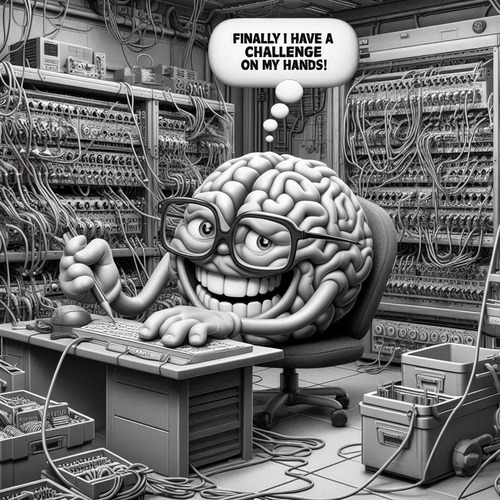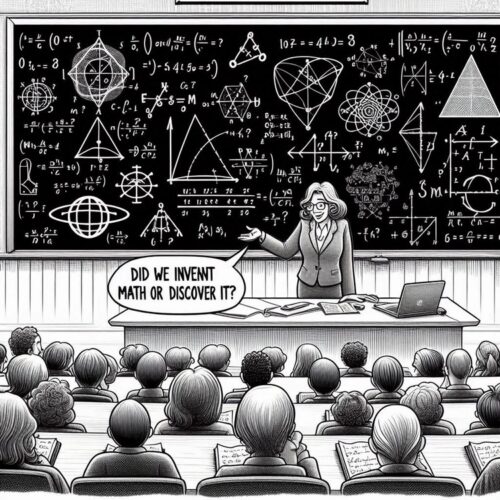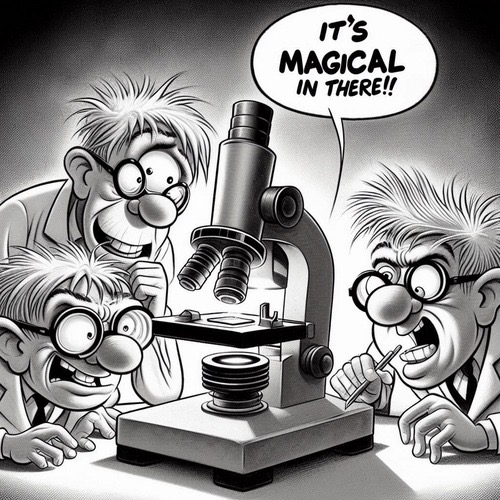The Big Hoax: Turns Out ‘Junk’ DNA Isn’t Junk After All
For decades, evolutionary scientists dismissed vast stretches of our DNA as useless “junk”—leftover evolutionary baggage with no purpose. This concept conveniently supported evolutionary theory while dismissing what creationists have long maintained: our genome reflects intelligent design, not random processes. Recent scientific discoveries have dramatically shifted the paradigm, revealing that what was once labelled “junk” actually serves critical functions in God’s intricate design.
THE RISE AND FALL OF “JUNK DNA”
The term “junk DNA” emerged in the 1970s to describe the approximately 98% of human DNA that doesn’t code directly for proteins. Evolutionists seized upon the concept, claiming these vast non-coding regions represented evolutionary debris—broken genes and viral remnants accumulated through millions of years of mutation and selection.
But as Scripture reminds us in Psalm 139:14, we’re “fearfully and wonderfully made.” Would our Creator, who designed the universe with such precision, fill our genetic code with meaningless garbage? Creationists didn’t think so, and science is now confirming this biblical wisdom.
MODERN SCIENCE REVEALS THE TRUTH
The scientific establishment received a wake-up call with the Encyclopaedia of DNA Elements (ENCODE) project. In 2012, ENCODE researchers shocked the scientific community by announcing approximately 80% of the human genome serves biochemical functions—a direct challenge to the “junk DNA” paradigm.
Here’s what researchers have discovered about regions formerly dismissed as “junk”:
- Regulatory Functions: Non-coding DNA contains thousands of enhancers and silencers that control when and where genes are expressed. These sophisticated “switches” are crucial for human development and cellular function.
- Structural Importance: Some non-coding DNA maintains chromosome structure and regulates DNA replication.
- RNA Production: Many non-coding regions produce RNA molecules that regulate gene expression, protect against viruses, and guide crucial cellular processes.
- Conservation Across Species: Many non-coding DNA sequences show remarkable conservation across different species – strong evidence they serve important functions worth preserving.
- 3D Genome Organisation: These regions help fold DNA into specific three-dimensional configurations necessary for proper gene expression.
Even transposable elements (once considered quintessential “junk”) are now understood to play crucial roles in immune function, brain development, and even pregnancy. As Tom Misteli, director of the Center for Cancer Research at the US National Cancer Institute, admitted: “I don’t think anyone would have anticipated even close to the level of precision and regulatory control that exists in the genome.”
DESIGN, NOT ACCIDENT
These discoveries align perfectly with what creationists have maintained all along: our genome reflects the handiwork of an intelligent Designer. The incredibly sophisticated regulatory networks encoded in our “junk” DNA show hallmarks of purposeful engineering, not evolutionary accidents.
Consider how Dr. Jonathan Wells, molecular biologist and intelligent design advocate, puts it: “Design theorists predicted that non-coding DNA would have function, while Darwinian theory predicted that much of it would be junk. The evidence is coming in, and the predictions of design theory are being confirmed.”
Even evolutionary biologist Richard Sternberg has acknowledged: “Neo-Darwinism asserts that the information needed to build new forms of life only comes from natural selection acting on random mutations and other DNA accidents… [but] the findings of genome projects and other research have cast doubt on this view.”
‘JUNK’ DNA ISN’T JUNK AFTER ALL: THE IMPLICATIONS ARE CLEAR
The collapse of the “junk DNA” paradigm represents a profound challenge to evolutionary theory and a powerful vindication of the creation worldview. Rather than carrying the burden of evolutionary history, our genome displays an elegant efficiency that points to its Creator.
As scientist John Mattick observed after years of research into non-coding DNA: “The failure to recognise the full implications of this [non-coding DNA] may well go down as one of the biggest mistakes in the history of molecular biology.”
Our Creator doesn’t make junk—every nucleotide in our DNA is there by divine design.
‘JUNK’ DNA ISN’T JUNK AFTER ALL: RELATED FAQs
What about vestigial organs? Aren’t they evidence of evolution? What scientists once confidently labelled as “useless evolutionary leftovers” have repeatedly been shown to have important functions. The appendix, once dismissed as vestigial, is now known to serve as a reservoir for beneficial gut bacteria and plays a role in immune function. Similarly, the coccyx (tailbone) provides crucial attachment points for muscles needed for sitting and standing, demonstrating purposeful design rather than evolutionary baggage.
- How do pseudogenes (genes that appear broken) fit into the creationist model? Recent research reveals many pseudogenes perform regulatory functions, controlling when and how other genes are expressed. For example, the PTEN pseudogene helps regulate its protein-coding counterpart, with implications for cancer prevention. This suggests pseudogenes aren’t broken remnants but sophisticated components of genetic regulation, consistent with intelligent design.
- What other predictions did the design model make that have been confirmed? Design theorists predicted function for introns (gene segments removed during processing), repetitive DNA sequences, and overlapping genetic codes—all of which have been confirmed by modern research. The discovery of complex, specified information throughout the genome and sophisticated error-correction mechanisms also align with design predictions. These features mirror what we observe in human-engineered systems, suggesting intentional design rather than undirected processes.
Has the scientific community fully abandoned the “junk DNA” concept? While many scientists now acknowledge function in non-coding DNA, some still cling to junk DNA concepts despite mounting evidence. This resistance often stems from philosophical commitment to naturalistic evolution rather than scientific data. The paradigm shift is ongoing, with researchers continuing to discover functions for previously dismissed DNA sequences, gradually forcing a complete reassessment of the genome.
- What about Endogenous Retroviral (ERV) sequences that look like viral insertions? ERVs, once considered viral junk, are now known to play crucial roles in placental development, immune function, and brain development. Many ERVs function as enhancers, controlling gene expression in specific contexts. Rather than being random viral debris, these sequences appear to be purposefully integrated components that contribute to human physiology in ways essential for our survival.
- Can genetic mutations create new information as evolution requires? While mutations can modify existing genetic information, they’ve never been observed creating the kind of complex, specified information required for evolutionary advancement. The design perspective better explains the irreducible complexity found in genetic networks. Most mutations that affect function are harmful or neutral, contradicting expectations if mutation-driven evolution were the source of biological complexity.
How does epigenetics relate to the junk DNA debate? Epigenetics—the study of changes in gene expression without altering the DNA sequence—reveals another layer of sophistication in the genome. Many non-coding DNA regions contain instructions for epigenetic regulation, controlling which genes are active in specific cells. This previously unrecognised level of genetic programming further challenges the “junk DNA” narrative and points to intentional design in the genome’s architecture.
‘JUNK’ DNA ISN’T JUNK AFTER ALL: OUR RELATED POSTS
Editor's Pick

Ephesians 1:13: Was the Spirit’s Indwelling Promised of Old?
When Paul declares believers are “sealed with the promised Holy Spirit” in Ephesians 1:13, one word jumps off the page: [...]

Monergism vs Synergism: Is Salvation God’s Work Alone?
When God saves us, does He do it alone, or does He need our help? The question isn’t mere theological [...]

Was Jesus Abandoned by the Father on the Cross?
WHY WE ANSWER IN THE NEGATIVE “My God, my God, why have you forsaken me?” These words from the cross [...]

Why Do Some Respond to God’s Call While Others Don’t?
THE REFORMED VIEW ON OUTWARD AND INWARD CALLS EXPLAINED Picture this: Two neighbours attend the same church service. They hear [...]

Does Ocean Salt Content Prove a Young Earth?
A COMPELLING LOOK AT MARINE CHEMISTRY AND EARTH’S TIMELINE The Salt Question That Challenges Deep Time: If Earth’s oceans have [...]
Noah’s Flood: Where Did All the Water Come From? And Go?
The question hits every Bible-believing Christian at some point: “If Noah’s flood covered the whole earth, where did all that [...]

No Marriage in Heaven? What Does Mark 12:25 Mean?
“Will I see my spouse in heaven? Will we still be married?” These questions pierce the heart of every Christian [...]

The Terror of Meeting God: What Isaiah 6 Reveals About Divine Holiness
WHEN ‘WOE IS ME’ IS THE ONLY PROPER RESPONSE TO A GLIMPSE OF GOD Picture this: You’re a prophet of [...]

Is the Holy Spirit Present in Unbelievers? The Biblical Answer
Can someone who doesn’t believe in Jesus Christ have the Holy Spirit living inside them? This question strikes at the [...]

The Gap Theory Exposed: Why Embrace a Young Earth?
The Gap Theory proposes there’s a vast time gap—millions or billions of years—between Genesis 1:1 (“In the beginning God created [...]
SUPPORT US:
Feel the Holy Spirit's gentle nudge to partner with us?
Donate Online:
Account Name: TRUTHS TO DIE FOR FOUNDATION
Account Number: 10243565459
Bank IFSC: IDFB0043391
Bank Name: IDFC FIRST BANK







